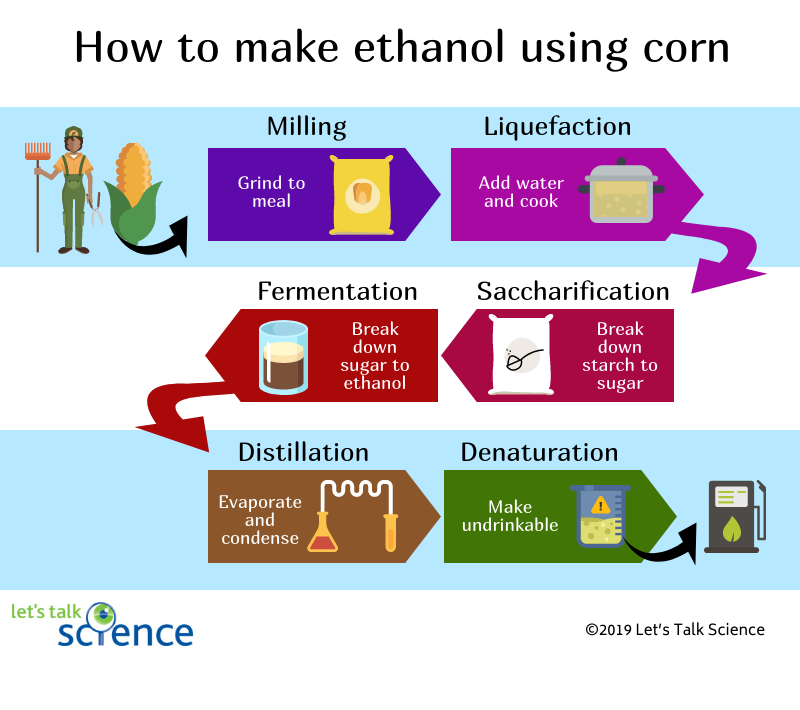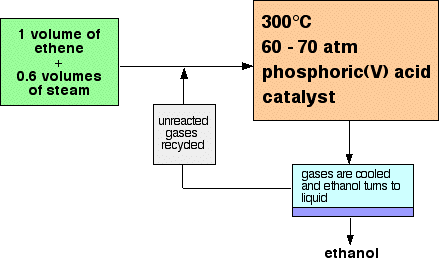
12 Principles of Green Chemistry
- Prevention
- It is better to prevent waste than treat or clean up waste after it has been created
- Minimise waste
- Atom economy
- Synthetic materials should be designed to maximise incorporation of all materials used in the process into the final product
- Maximise efficiency of the reaction
- What atoms of the reaction are incorporated into the final design of the product(s), and what atoms are wasted?
- Less Hazardous Chemical Syntheses
- Where practicable, synthetic materials should be designed to use and generate substances that possess little or no toxicity to human health and the environment
- Limit hazards of products and materials
- Note: this implies it may not be possible/practical to avoid certain toxic materials
- Designing Safer Chemicals
- Chemical products should be designed to preserve efficacy of function while reducing toxicity
- Minimising toxicity while simultaneously maintaining function and efficacy
- Efficacy: ability to produce a desired/intended product
- Safer Solvents and Auxiliaries
- The use of auxiliary substances (e.g. solvents, separation agents, etc) should be made unnecessary wherever possible, and innocuous when used
- Minimise use of auxiliary substances, and wherever used, use non-harmful substances
- Solvents and separation agents do matter, we just want to limit hazards/risks
- Solvents account for 50-80% of the mass in a standard batch chemical operation
- Design for Energy Efficiency
- Energy requirements should be recognised for their environmental and economic impacts and should be minimised. Synthetic methods should be conducted at ambient temperatures and pressures
- Use ideal conditions for synthesis
- Maximise energy efficiency
- Usually, no consideration is given to temperature/pressure for energy requirements
- Thus, we need to consider the energy requirements and try to maximise efficiency
- Use of Renewable Feedstocks
- A raw material or feedstock should be renewable rather than depleting whenever technically and economically practicable
- Use sustainable materials for synthesis
- Reduce Derivatives
- Unnecessary derivatization(use of blocking groups, protection/deprotection, temporary modification of physical/chemical processes) should be minimised and avoided if possible, because such steps require additional reagents and can generate waste
- i.e. keep process as simple as possible
- Minimise/prevent unnecessary reactions to reduce waste/use of reagents
- Reduce use of derivatives and protect groups in the synthesis of target molecules
- Derivatization: A chemical compound is converted into a product of similar chemical structure, called a derivative
- Catalysis
- Catalytic reagents (as selective as possible) are superior to stoichiometric reagents
- Concept of efficiency shifts from maximising yield to minimising waste
- Prioritise waste over yield
- Use catalysts to speed up reaction, instead of adding more reagents
- Design for Degradation
- Chemical products should be designed so that at the end of their function, they break down into innocuous degradation products and do not persist in the environment
- Optimise the commercial function of a product while minimising its hazard and risk
- Real-time Analysis for Pollution Prevention
- Analytical methodologies need to be further developed to allow for real-time, in-process monitoring, and control prior to the formation of hazardous substances
- Real-time feedback/process analysis for the safe and efficient operations of chemical plants/reactions
- Inherently Safer Chemistry for Accident Prevention
- Substances and the form of a substance used in a chemical process should be chosen to minimise the potential for chemical accidents, including releases, explosions, and fires
- Laboratory safety
- Minimise potential safety hazards
- Substances and the form of a substance used in a chemical process should be chosen to mimise the potential for chemical accidents
Atom Economy:
Ethanol Production
Both processes are exothermic


Fermentation
- Metabolic process where organisms convert carbohydrates (sugars, starch) into alcohols/acids
- Starts with glucose and ends with ethanol and carbon dioxide
- Conditions
- Room pressure and ambient temperature (~37˚ C)
- 3-5 pH
- Enzymes as catalysts
- Enzyme: biological catalyst
- Oxygen is excluded from this to prevent the anaerobic respiration of sugars, and encourage the production of ethanol
- Hydrolysis of sucrose to glucose and fructose, (isomers of ). This reaction is catalysed by the yeast enzyme invertase or sucrase
- Fermentation of the glucose/fructose mixture to ethanol and carbon dioxide. This is catalysed by the yeast enzyme zymase
Extension
1. Glycosis
- Breakdown of glucose into 2 pyruvate molecules
- 11 chemical reactions, breaks down sugars and releases energy in the form of ATP
- Overall products are 2 pyruvate molecules, 2 NADH (enzyme), and 2 molecules of ATP
- The pyruvate molecules are further processed in the absence of oxygen to form ethanol
2. Pyruvate to Ethanol Conversion
- Pyruvate molecules are converted into ethanol and carbon dioxide
- Step 1: carboxyl group is removed and released in the form of , producing acetaldehyde. This reaction is catalysed by pyruvate decarboxylase enzyme
- Step 2: Acetaldehyde is reduced by NADH to form ethanol. The molecule/enzyme is regenerated during this. The catalyst for this is alcohol dehydrogenase
3. Overall:
Chemical Synthesis
- Produced by reacting ethene with steam
- The reaction is reversible, and the forward reaction is exothermic
- Only 5% of the ethene is reacted for every pass through the reactor, but 95% can be achieved by removing the ethanol
- Ethene is used in excess, even though water is cheaper
- This is because of the phosphoric(V) acid, which is coated on a solid silicon dioxide support. An excess of steam results in the dilution of the catalyst, and perhaps even removal of it, as it washes off
- As the forward reaction is exothermic, a low temperature is ideal, to maximise yield.
- However, as rate requires a high temperature, a compromise temperature of 300˚ C is used
- Produces an acceptable amount of ethanol in a very short time (5% of ethanol reacts)
- High pressure is ideal, however only a moderate pressure is used due to safety, energy and economic concerns
- Furthermore, at high pressures, ethene polymerises to make poly-ethene
- This produces waste, and could clog up the plant
- A catalyst of phosphoric(V) acid coated on a solid silicon dioxide support is used
- This is to increase the rate of reaction without decreasing yield
- Without a catalyst, the reaction is slow, such that virtually no reaction happens in a realistic amount of time
- Catalyst ensures dynamic equilibrium is achieved as fast as possible within the short time the gases spend in the reactor
- Conditions:
- Phosphoric acid catalyst
- 60-70 atm (moderate pressure)
- ~300˚ C
Comparisons
- Rate
- To maximise rate, a catalyst and moderate temperatures and pressures are utilised in the synthesis of ethanol
- To maximise rate in fermentation, temperature of ~37 ˚C and ambient pressure is used
- Equilibrium
- To shift equilibrium right, an excess of ethene is provided, and moderate pressures are used, in the synthesis of ethanol
- Biofuel
- Biofuels: fuels made using living organisms or the wastes they produce
- Thus, ethanol produced through fermentation is biofuel
- Synthetic ethanol is not
- 12 Principles of Green Chemistry
- Prevention
- Synthesis: the excess ethene is reacted, to minimise waste, and thus prevention is upheld
- Fermentation: the yeast dies after a few weeks, and thus waste is created
- Atom Economy
- Synthesis: The excess ethene is reacted, to maximise the amount of reactants reacted, and thus the Atom Economy is upheld
- Atom economy calc is 100%
- Fermentation: Not all of the feedstock is consumed, and thus the Atom Economy is not upheld
- Atom economy calc is 51%
- Synthesis is preferable
- Synthesis: The excess ethene is reacted, to maximise the amount of reactants reacted, and thus the Atom Economy is upheld
- Less Hazardous Chemical Synthesis
- Synthesis: only ethanol is produced, which is flammable, and could potentially be harmful. Furthermore, a phosphoric(V) acid catalyst is used, which is corrosive
- Fermentation: only ethanol is produced, which is flammable, and could potentially be harmful
- Designing Safer Chemicals
- Ethanol is relatively safe, in that large doses must be taken for it to be permanently harmful to anyone
- However, small doses can cause headaches, dizziness, and in extreme cases, irritation of the eye
- Safer Solvents and Auxiliaries
- Synthesis: no harmful, extra, unnecessary substances
- Fermentation: no harmful, extra, unnecessary substances
- Design for Energy Efficiency
- Synthesis: Only moderate temperatures and pressures are used, to conserve energy
- Fermentation: Large amounts of heat energy are required to isolate feedstock
- Use of Renewable Feedstocks
- Synthesis: Water and ethene are not renewable
- Fermentation: Organic waste, such as corn and starch, are renewable
- Reduce Derivatives
- Synthesis: Only necessary reactants are converted into products
- Fermentation: Some by-products are produced, through other reactions
- Catalysis
- Synthesis: A phosphoric (V) acid catalyst on a silicon dioxide support is used
- Fermentation: No catalyst is used
- Design for Degradation
- Ethanol is biodegradable and nontoxic
- Real-time Analysis for Pollution Prevention
- Carbon dioxide is produced by fermentation
- No greenhouse gases are produced in the synthesis by addition of ethanol
- However, carbon dioxide is produced from the combustion of ethanol
- Inherently Safer Chemistry for Accident Prevention
- Workers have respirators, overalls, gloves, boots and safety goggles
- Ethanol is kept in containers that are securely sealed to prevent leakage/evaporation, which are accurately labelled, and have features to prevent explosions. These are also kept in cool areas
- When transporting ethanol, grounding/bonding procedures are present to prevent static charges
- Ethanol should not be kept near incompatible materials
- Regular risk assessments
- Fire extinguishers ready in case of fire
- Ethanol is absorbed in the case of a spill, so that it does not enter water supply
- Monitoring/warning systems in place
- Regular fire drills
- Prevention
| Principles | Fermentation ✅ | Addition ❌ |
|---|---|---|
| Energy use | Fermentation is conducted at room pressure and ambient temperatures (~37 ˚C) so less energy is needed to heat reagents or create high pressures ✅ | Considerable energy is needed to heat reagents (~300 ˚C) and raise pressure (60-70 atm) in order to achieve a satisfactory reaction rate and yield ❌ |
| Renewable feedstock | Uses renewable biomass and biomass waste products ✅ | Uses ethene which is a non-renewable fossil fuel based product ❌ |
| Production or use of toxic substances | Neither sugar nor yeast are toxic reagents. While the product occurs naturally in the environment. High concentrations of are asphyxiating in confined spaces ✅ | Ethene is a highly flammable hazardous gas. It is an asphyxiant (due to oxygen exclusion). The acid catalyst, pure phosphoric acid, is a corrosive and hazardous substance ❌ |
| Inherent safety due to production method Ethanol is flammable | Fermentation occurs in enclosed vats at ambient temperature and pressure and may be considered to pose few safety risks ✅ | Involves the use of high temperatures and pressures as well as the flammable gas ethene and the corrosive acid catalyst . These reagents and conditions pose inherent safety risks ❌ |
| Atom economy | Fermentation has a low atom economy (~51.1%) as a considerable amount of the reactant mass ends up as a waste, i.e. ❌ | Addition has a 100% atom economy as all of the products are incorporated into ethanol, i.e. there is no other product ✅ |
Thus, fermentation is preferred, as it obeys more of the 12 principles of green chemistry than addition.
Sources
https://www.acs.org/greenchemistry/principles/12-principles-of-green-chemistry.html https://microbenotes.com/alcohol-fermentation-ethanol/ https://letstalkscience.ca/educational-resources/backgrounders/how-ethanol-made https://www.chemguide.co.uk/physical/equilibria/ethanol.html https://www.energy.gov/eere/bioenergy/biofuel-basics https://www.gexcon.com/blog/ethanol-associated-hazards-and-safety-measures/ Honourable mentions: https://www.chemguide.co.uk/physical/catalysis/hydrate.html#top https://www.leaf.tv/articles/how-to-make-homemade-wine-using-welchs-grape-juice/ https://www.mdpi.com/2311-5637/7/4/268